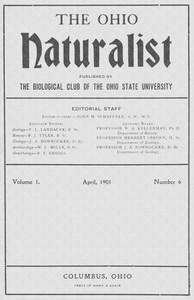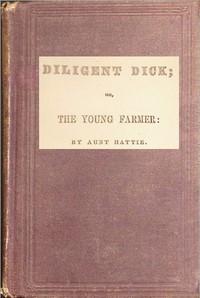Read this ebook for free! No credit card needed, absolutely nothing to pay.
Words: 14187 in 4 pages
This is an ebook sharing website. You can read the uploaded ebooks for free here. No credit cards needed, nothing to pay. If you want to own a digital copy of the ebook, or want to read offline with your favorite ebook-reader, then you can choose to buy and download the ebook.
Entered at the Post Office at Columbus, Ohio, as second class matter.
PUBLISHED BY
THE BIOLOGICAL CLUB OF THE OHIO STATE UNIVERSITY
VARIATION IN SYNDESMON THALICTROIDES.
W. A. KELLERMAN.
This charming spring flower called in popular language Rue-Anemone, indigenous to eastern North America, has been known from early times, and as in many other equally unfortunate cases has had imposed upon it by botanists a superfluity of scientific names. Linnaeus in his Species Plantarum, 1753, listed it as Anemone thalictroides; in 1803 Michaux called it Thalictrum anemonoides; it was rechristened as Syndesmon thalictroides in 1832 by Hoffmansegg; finally Spach in 1839 proposed the name Anemonella thalictroides. Botanists to-day consider our plant as more properly placed in Hoffmansegg's genus Syndesmon, and for it the earliest specific name, applied by Linnaeus, is very properly retained; hence the correct designation in botanical language is Syndesmon thalictroides Hoffmg.
The extent of variation in this plant has been but partially noted heretofore. The tabulation given below indicates the results of observations made the latter part of April and the first of May this year in regard to the number of flowers and the variation in the involucral leaves. As to whether these are sessile as given in our Manuals, notes have appeared on previous pages of this Journal by Messrs. Burglehaus, Wetzstein and Schaffner, cf. pp. 72, 104 and 106.
The number of flowers is normally three and the involucral leaves two. A diagram showing their arrangement is given at A, Fig. 1. The two leaves are not always ternate; they may both be simple, diagrammatically shown at B. A further variation, shown in Fig. 1 C presents one simple and one compound leaf. At D greater complexity is indicated, there being in many plants besides the central flower three instead of only two axillary ones, and only one of the subtending leaves is compound. In the case shown at E two of the three involucral leaves are compound. As shown in F and G four leaves may contribute to form the involucre and each one subtend a flower; in some cases two of the leaves are compound, in others three or even all may be compound. Still other variations along this line occur, but space forbids a fuller enumeration.
It should be stated that although the pedicels and leaves as shown in the diagrams occupy but a small portion of the circle, as a matter of fact the leaflets are spread and so disposed as to occupy the entire area when viewed from above the plant, the leaflets being equidistant from each other, or contiguous but not overlapping, and therefore taking the most advantageous position so far as sunlight is concerned.
The very striking variation in regard to presence or absence of the petiole to the involucral leaves has been previously noted. An inspection of a very large number of specimens collected in the vicinity of Columbus and in Perry and Logan counties, as well as of specimens kindly sent for the purpose by Mr. F. H. Burglehaus, Prof. A. Wetzstein, and Supt. H. N. Mertz, shows that petiolate forms occur exclusively in some localities ; in other places the sessile form only obtains ; and yet elsewhere both forms are about equally represented . We can not regard the petiolate forms as in any real sense a variety --since both sessile and petiolate leaves occur in countless cases on the same plant. But where the petiolate form occurs prevailingly or may be exclusively, it would be advantageous to designate the same; therefore I propose as follows:
Syndesmon thalictroides f. PETIOLATA nova forma. Involucral leaves prevailingly or exclusively with petioles 2-10 or even 25 or more millimeters in length; otherwise like the typical species. Toledo , St. Marys and West Mansfield, occasionally at Columbus and Rendville.
Comparatively few monstrosities were observed. In one case only did merely one leaf and two flowers occur; often but one flower develops though two leaves occur as usual; in a few cases a single small leaf was seen on a pedicel. A more common teratological variation was the elongation of the axis at the usual point of insertion of the flowers and involucral leaves, often distantly separating the leaves with their axillary flowers; in one case the distance between the points of insertion of the leaves was nearly two inches. The sepals are occasionally excessively numerous.
Free books android app tbrJar TBR JAR Read Free books online gutenberg
More posts by @FreeBooks











